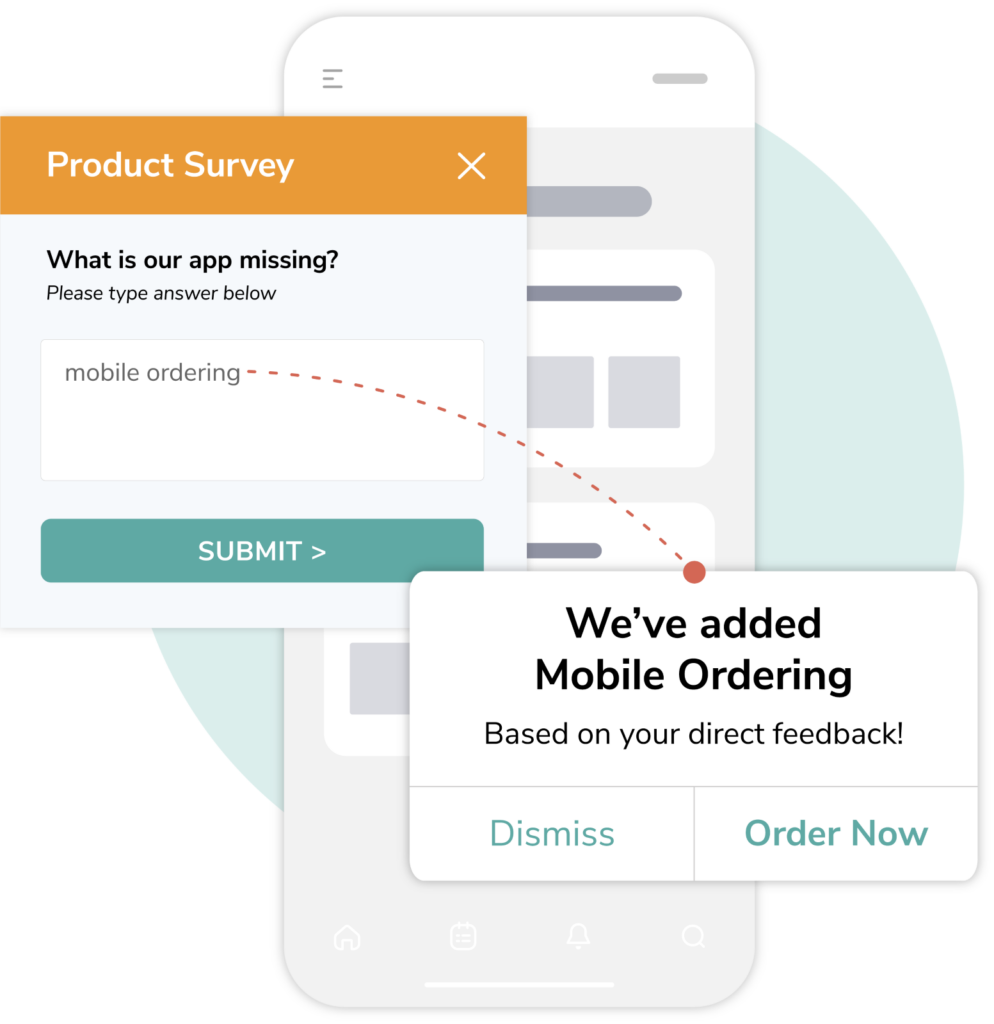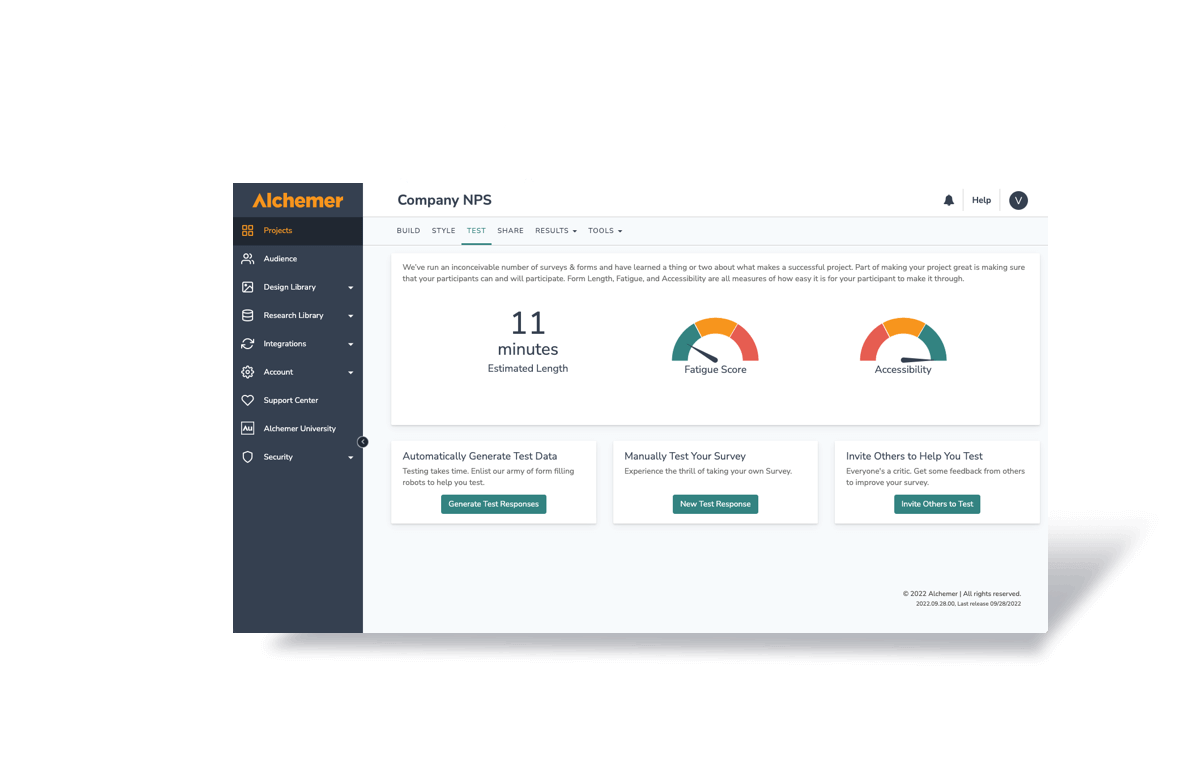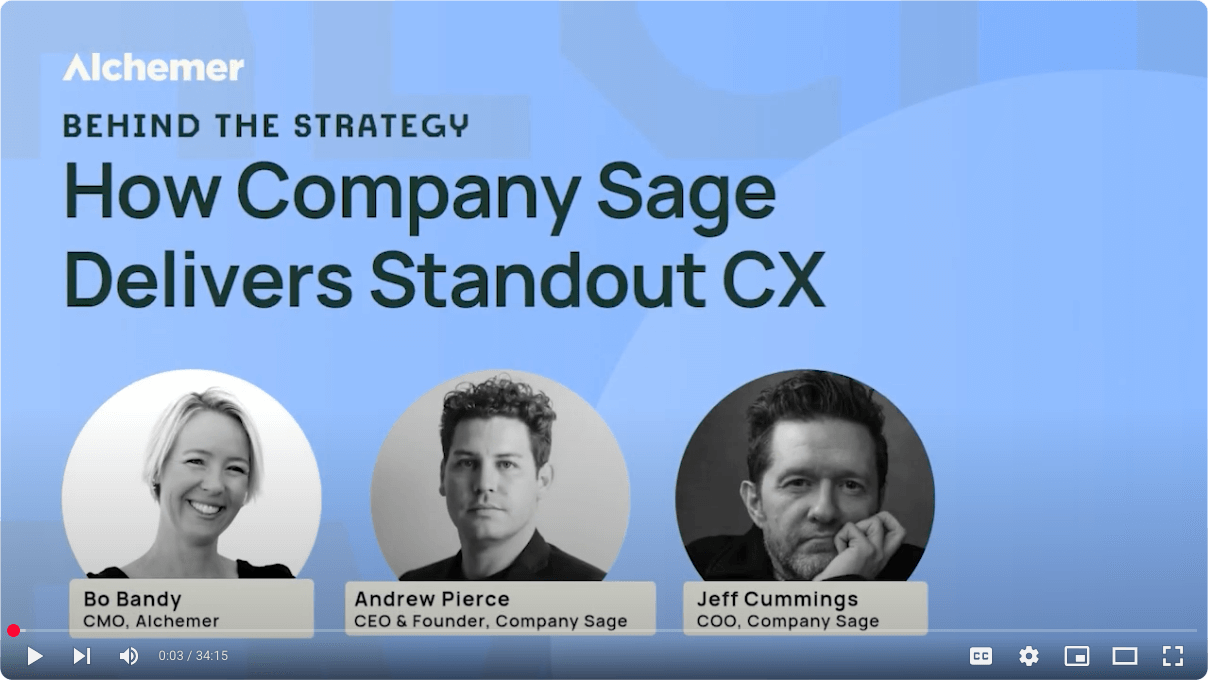Achieving a high customer satisfaction score doesn’t inherently mean anything for an organization.
In business, it is often viewed that all customers are potential candidates for dissatisfaction. For example, even if customers are currently pleased with the product, future updates could impact customer satisfaction positively or negatively.
This is an optimistic way to look at things, because it means there will always be something to improve! A company should be concerned if it ever runs out of opportunities for improvement, as this could signal a troubling future.
Businesses need to cultivate enthusiastic and loyal customers who provide detailed feedback, both positive and negative. Passionate customers are preferred over those who are simply satisfied. In a business model reliant on word-of-mouth marketing, having more than just “satisfied” customers is crucial.
At Alchemer, we encourage organizations to go beyond the simple customer satisfaction survey, and instead dive deeper into customer sentiment, while always acting on the feedback collected. This post provides the recipe to do exactly that:
Does Customer Satisfaction Drive Change? No.
Without exception, customer satisfaction surveys and feedback systems should be based on a desire to change and improve.
If you set out to measure customer satisfaction, what action are you trying to take? A simple customer satisfaction score is not easy to act on (at least not directly). It represents merely a number without a narrative.
Most companies will not like their score and then brainstorm internally on how to improve it (or worse they’ll like it and do nothing). These ideas often won’t be evaluated through research; but will be implemented directly. The company then conducts another satisfaction survey in a year to assess any changes.
It’s never a good sign if your organization relies on customer satisfaction survey results as the primary indicator for needed improvements. An innovative company that prioritizes continuous improvement will likely enter your market and surpass your organization.
Brands should consistently seek ways to enhance their services to boost brand loyalty, customer satisfaction, word-of-mouth marketing, and encourage increased customer purchases.
Remember to align your metrics with these key initiatives!
A high satisfaction score always feels good, but you may have just lost a valuable opportunity to get actionable feedback from a customer, by using that respondent’s time on a metric that you can’t act on.
If you want to innovate and grow, ask for actionable feedback and ask for it as frequently as possible.
Ask the Right Customer Satisfaction Survey Questions for Your Goals
Like all businesses, resources are limited, and this constraint can actually be beneficial. To make the most of these finite resources, it’s essential to focus them where they will have the greatest impact. Collecting feedback helps identify the areas that will most significantly affect both customers and the business, ensuring that available resources are used effectively.
Here are some questions that are more useful than simple scale questions about satisfaction. These questions help decide how to iterate services, experiences, and products.
- How would you improve our product/service?
- How can we improve?
- If you could change one thing about our service/product, what would it be? Why?
- What was one thing you love about our service/product? Why?
- How does our product/service compare to competitors?
- What are a few words you’d use to describe our product or service?
- In what way is our product weak compared to our competitors?
At Alchemer, these questions are utilized daily by our customers—not only in satisfaction surveys but also across digital feedback channels, email, and through the automated feedback systems we’ve developed.
These questions are typically essay or open-ended questions, offering the greatest opportunity for discovery and actionable feedback. They also allow for a more genuine expression of gratitude rather than a mechanical response.
Ask Customer Satisfaction Survey Questions Often & Act Often
Many companies only conduct customer satisfaction surveys once a year, and for some, that’s their only form of feedback.
Imagine if you only understood how your customers were feeling for a week each year—it would be a recipe for disaster!
Organizations and products need continuous feedback to grow and thrive. Companies that stay more attuned to their customers’ needs are more likely to succeed. What does that look like in practice:
- Rather than relying on annual or quarterly surveys, implement feedback systems that provide ongoing insights. Use survey software or other feedback tools to gather continuous feedback and then act on it consistently.
- Foster a culture that values feedback and makes improvements regularly. Develop a system for managing feedback efficiently and make small, rapid adjustments based on the insights received.
This approach aligns with Agile and Lean practices, which emphasize continuous, incremental improvements. It helps organizations move faster, manage change effectively, and respond to feedback without delay.
For more on these lean practices, the O’Reilly “Lean Series” of books is a valuable resource.
Net Promoter Score
IFor those who prefer to keep score on feedback, the Net Promoter Score (NPS) technique is worth considering.
The format is:
“Based on your experience today, how likely are you to recommend [product/service] to a friend or colleague? Why?”
While this method has its pros and cons, it’s valuable for addressing a key business question: “Will the customer recommend us?”
It’s important to remember that NPS is subjective and should be used within a feedback system rather than in the middle of a quantitative survey. Avoid mixing it with statistically valid qualitative questions.
The question’s value is significantly enhanced by the “why” component, which provides deeper insights. So, remember to always ask customers to explain their rationale for giving the NPS number they provided.
Say “Thank You” and Close the Loop
Customers have been conditioned to avoid giving feedback due to years of experience where providing feedback felt unappreciated and ineffective. They often feel their input is ignored, rarely see any changes, and sometimes assume their feedback isn’t even read.
This can be changed with a few simple actions that have the power to greatly improve customer relationships.
Simply say “thank you” and respond personally to every piece of feedback received. No need to offer anything beyond a genuine thank you, until you’ve had a chance to act on their feedback.
Customers take time to provide feedback, which can drive better growth, increased profitability, and prevent costly mistakes. Acknowledge their input and value that feedback provides, especially when it’s negative. This small gesture can significantly boost response rates and increase customer satisfaction.
However, saying “thank you” is just the first step. For customers to feel truly heard they need to see brands act on the feedback they provide. Customers notice when their feedback goes straight into the echo chamber, with 55% of people believing brands don’t act on the feedback their customers provide.
Closing the loop with customers is crucial for demonstrating that their feedback is valued and acted upon. For example, if a customer provides a suggestion or reports a bug, update them on its status in your roadmap. Once the issue is resolved or the suggestion is implemented, follow up to inform the customer of the impact their feedback had. Customers want to see their voices heard and know that their input is prioritized by your team.

Conclusion
To recap, a high customer satisfaction score alone does not guarantee success and satisfaction metrics are misleading if they don’t drive actionable change.
Instead, it’s crucial for brands to ask the right questions, analyze the results, and actively respond and address customer feedback.
For brands seeking to transform this feedback into impactful insights, Alchemer Pulse provides a powerful solution. Alchemer Pulse helps turn noisy text feedback into clear signals for action, offering advanced text analysis and sentiment tracking.
With Alchemer Pulse, businesses can uncover hidden insights, streamline feedback management, and make data-driven decisions that resonate with customer needs.
If you’d like to see Alchemer Pulse in action, check out our recent webinar, “An Introduction to Text Analysis with Alchemer Pulse”!




